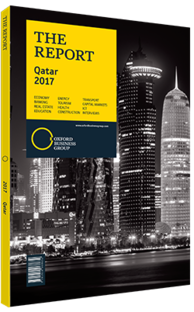Online platforms shaping Qatar's media landscape
Although newspapers have traditionally been the main focus for advertising spend, as Qataris become more open to social media the potential for a shift to online is clear. Qatar has a high internet penetration rate, growing from 70% in 2014 to 97% in 2017, according to the Northwestern University in Qatar “Media Use in the Middle East 2017” (MUME) report, which surveyed seven countries: Egypt, Jordan, Lebanon, Qatar, Saudi Arabia, Tunisia and the UAE.
This growth is perhaps attributable to the adoption of mobile phones, with the smartphone penetration rate standing at 97% in 2017, well above the survey average of 83.8% and behind only the UAE, with a rate of 99%. Qatar is therefore well positioned for high levels of social media use, especially as social networking site usage levels in the Middle East are much higher than in any other region internationally, according to figures from the Pew Research Centre, with 86% of adults using the internet, compared to a global average of 76% in 2015.
Regional Consumption
However, the use of certain major social networking sites in the country is low compared to some regional countries.
Excluding messaging platforms such as WhatsApp, Facebook is the most popular social media site. In 2017, 58% of Qatari residents used Facebook, according to the MUME survey. This is compared to the seven-country survey average of 64.6%, and respective figures of 77% and 84% in GCC member states Lebanon and Saudi Arabia. However, the number of facebook users is also in decline, falling from 67% in 2015. The second-most popular social media site is YouTube, with the proportion of survey recipients who use the video app standing at 56%, followed by Instagram with 46%. Twitter use stood at 29% compared to a 21.4% survey average, and 44% and 45% in Saudi Arabia and the UAE, respectively.
However, the use of some other platforms was higher than that of other surveyed countries: 46% of Qatari residents used Instagram, compared to 33.5% on average; 88% used WhatsApp, versus 58% on average; and 36% used Snapchat, versus 21.4% on average.
Demographic Trends
Excluding messaging platforms, at 66%, Instagram was the most popular site among Qatari nationals – as opposed to the overall population, which contains a large proportion of expatriate workers – and especially with 18-24-year-olds, at 87%.
From 43% in 2015 to 22% in 2017, usage levels for Facebook were particularly low among Qatari nationals of all ages. YouTube use in this group also declined from 47% to 37%. Male nationals were more likely to use Facebook than female nationals, with 26% versus 17%, respectively. Facebook use was highest among the 24-34 age group, at 27% – although this was down from 53% in 2015 – compared to 22% in the 18-24 group and 21% in the 35-44 age group. Twitter use, by contrast, was most popular with 18-24-year-old nationals, at 64%.
Growing Potential
While online platforms have become a major media focus in the country, with Facebook usage levels not far off the readership of newspapers – the major platform for advertising in Qatar – advertisers have been slow to take to online and social media-based sales. In 2015 ad revenues in the MENA region were dominated by TV and newspapers, which commanded 43% and 32%, respectively, according to the “Media Industries in the Middle East 2016” report. However, industry figures say that this is changing. “It was previously a challenge to sell clients online advertising, but over the past two years firms have become more open to online and social media, and now you can sell viral-only campaigns to clients who are convinced of the importance of speaking to the new generation,” Krikor Khatchikian, general manager of Grey Doha advertising agency, told OBG, noting that campaigns on Twitter and Instagram were particularly popular, in part because of the lower Facebook use among Qatari nationals. However, he added that online advertising was likely to complement rather than replace traditional media marketing in the short term.
You have reached the limit of premium articles you can view for free.
Choose from the options below to purchase print or digital editions of our Reports. You can also purchase a website subscription giving you unlimited access to all of our Reports online for 12 months.
If you have already purchased this Report or have a website subscription, please login to continue.

